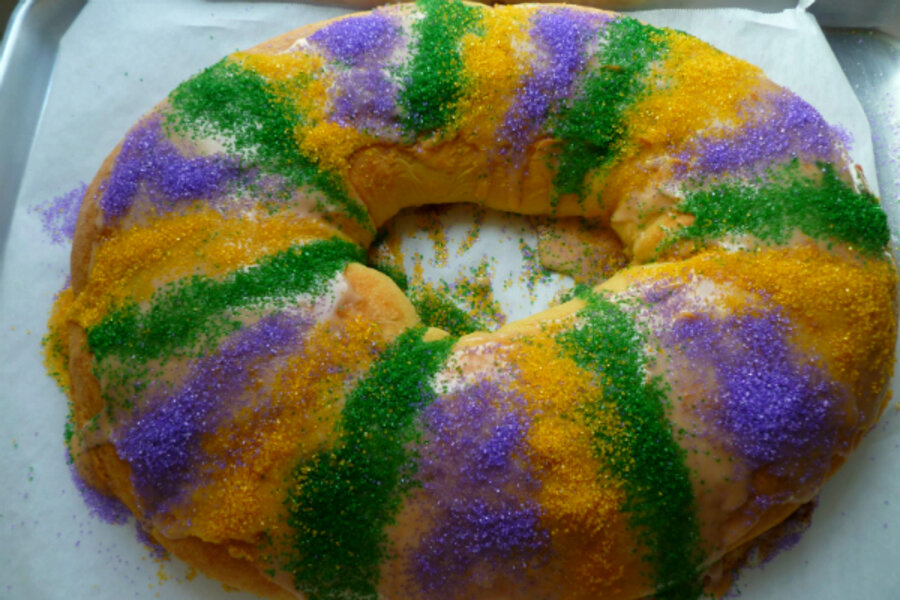King Cake for Mardi Gras
Loading...
Happy Mardi Gras! During my recent culinary trip to New Orleans, my friend Jen who lives locally brought me, among other things, a slice of King Cake from Gambino's Bakery. There's nothing like tasting authentic king cake from a fabulous bakery during Mardi Gras season.
And then I did something unusual. I bought a cake mix. Yes. Even though I usually bake all my desserts from scratch, a mix seemed like the easiest way to try and make a King Cake mix on my own at home.
There are plenty of recipes out there for making King Cake from scratch. And someday I want to try this one from Emeril Lagasse. Even though I eschew cake mixes, I broke down and bought one for two reasons: (1) it was locally made and certified to have been made in Louisiana, (2) I didn't want to go out and buy purple, green, and yellow sugars separately. It's much easier to get them all in one package.
King Cake is essentially a brioche dough, with a ribbon of brown sugar cinnamon (or praline sugar) running through it, baked in an oval shape, glazed with royal icing, and sprinkled with Mardi Gras colors. Tradition decrees that a plastic baby (or sometimes a pecan) is hidden among the slices and whoever finds that plastic baby in their piece is responsible for hosting the next round of Mardi Gras parties.
Note to any novice bakers: Do not bake the plastic baby inside with the cake, it will melt and make your cake unsafe to eat! The baby is usually tucked underneath the slice of cake after baking and serving. I'm a personal fan of the Mardi Gras colors and I like a good brioche as much as the next person so it's hard not to like King Cake.
The mix made for a soft dough, which was a little concerning but I followed the instructions to the letter and hoped for the best. After the first rising, the dough was still soft so I had to flour it liberally to handle it. I didn't bother with a rolling pin since it was so soft and I was able to shape it out into a rectangle with my hands, brush it with melted butter, sprinkle the praline sugar all over it and roll it up, jelly roll style. With careful handling, it wasn't too hard to bring the ends together to form an oval and pinch the edges shut. Then I let it rise a second time until it had doubled in size before setting in the oven to bake.
I didn't bother brushing with egg wash to make it brown nicely since it was going to get covered in glaze anyway. The glaze packet also came with the mix and was likely just powdered sugar. I added vanilla and a little milk to until it was the consistency I wanted. The fun part was sprinkling the colored sugars on top: purple for justice, green for faith, and gold for power.
The King Cake from the mix actually wasn't bad. It was a little more cake-y than the one from Gambino's bakery in New Orleans, but still tasty and the "cake" (more like a brioche) was complemented nicely by both the sweetness of the glaze and the crunch of the colored sugars.
Next time I definitely want to make one from scratch and see how it turns out.








